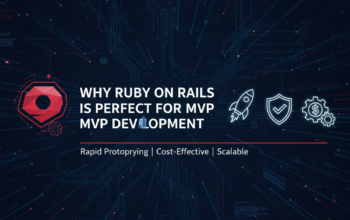In this digital-first world, the rise of influencer marketing has fundamentally transformed how businesses, researchers, and tech platforms interpret social media behaviour. While influencer campaigns may be visible to the public, the underlying data that powers these efforts is far less understood. That’s where influencer analytics platforms come into play, offering granular insights that help decode the real impact and reach of social voices.
Whether you are a research firm, a social platform, or a tech company building tools that interact with social media ecosystems, understanding influencers from a data perspective is now essential. Modern influencer analytics platforms are engineered to do just that, providing the intelligence needed to understand influence, not just observe it.
What Is an Influencer Analytics Platform?
An influencer analytics platform is a data-driven system that collects, processes, and analyzes publicly available data related to social media influencers across platforms. These platforms are not about connecting with influencers or managing campaigns; instead, they are built to track, evaluate, and quantify influencer activity and performance across digital channels.
In short, influencer analytics platforms turn raw social data into structured intelligence, helping data buyers, agencies, platforms, and research firms answer key questions such as:
- Who are the most relevant influencers in a given niche or geography?
- What is the actual reach and engagement of an influencer’s content?
- How has an influencer’s growth trended over time?
- Are audience demographics in line with a particular market or segment?
- Which influencers are gaining or losing traction?
The Growing Demand for Influencer Identification Tools
As social platforms become more crowded and noisy, finding the right influencer is no longer just a manual or subjective task. This is where influencer identification tools are playing a key role. These tools, often integrated within larger analytics platforms, apply algorithmic filters to help users discover influencers based on:
- Follower count
- Engagement rate
- Content themes or categories
- Geography
- Audience demographics
- Sentiment and authenticity metrics
These aren’t surface-level tools. The best influencer identification tools rely on robust data crawling, natural language processing (NLP), and machine learning to index millions of social accounts, score them for relevance and quality, and allow data buyers to segment them based on specific use cases.
Why Data Matters More Than Ever
In the early days of influencer marketing, metrics like follower count and likes were enough. But today, the focus has shifted to authentic engagement, audience quality, and long-term influence trends. As a result, data has become the cornerstone of any decision involving influencer selection, performance benchmarking, or trend analysis.
For tech companies building social listening or analytics tools, access to clean, structured influencer data is critical. For media and research firms analyzing cultural or behavioral shifts, influencer data helps reveal real-time movements in opinion, popularity, and content virality. And for marketing platforms, analytics feeds help drive smarter tools for campaign planning and reporting.
Influencer analytics platforms help fulfill this growing demand by providing scalable access to influencer data not just in real time, but also historically unlocking patterns that drive insight and innovation.
Key Features to Look for in an Influencer Analytics Platform
Not all influencer analytics platforms are created equal. Here are key features that differentiate the most reliable platforms:
1. Cross-Platform Data Coverage
The platform should cover major social networks like Instagram, YouTube, and TikTok. Cross-platform visibility enables a more complete view of an influencer’s digital footprint.
2. Historical Performance Tracking
Being able to look back at months or even years of follower growth, engagement rates, and posting frequency helps identify patterns and anomalies that might not be visible from recent activity alone.
3. Audience Demographics & Interests
This is crucial for segmentation. A strong analytics platform should provide insights into an influencer’s audience—age, gender, geography, language, and interests—derived from probabilistic modeling and machine learning.
4. Content Analysis and Classification
Using NLP and computer vision, leading platforms can analyze the actual content being posted—understanding tone, sentiment, topics, hashtags, and even visual style. This helps data buyers match influencers to specific trends or themes.
5. Influencer Discovery Tools
Whether searching by location, content type, follower count, or engagement rate, advanced influencer identification tools make it easy to pinpoint the most relevant voices for your analysis or product use case.
6. Scalable API Access
For tech firms and platforms integrating influencer data into their systems, reliable API access is a must. A good analytics provider should support high-volume data extraction with clean, structured formats.
Use Cases Beyond Marketing
While marketing is the most obvious use case, influencer data is being used across multiple sectors today:
- Tech Platforms: To build social media listening tools, trend analyzers, or brand safety monitors.
- Media Agencies: For benchmarking social reach and influence for talent selection and sponsorship valuations.
- Academic and Social Research: For studying digital behavior, cultural influence, and communication dynamics.
- AI and ML Developers: For training models on influencer patterns, social language, or audience behavior.
- Investment Firms: For evaluating emerging influencer-driven brands or social trends impacting consumer behavior.
All of these use cases require reliable, clean, and enriched influencer data—something traditional marketing tools are not designed to provide at scale.
The Rise of Data-Centric Models in Influencer Intelligence
The market is shifting away from full-service influencer platforms that offer campaign execution or brand deals. Instead, there’s increasing demand for data vendors who specialize solely in delivering influencer analytics and identification data, without involvement in influencer outreach, campaign execution, or network management.
This shift allows agencies and platforms to retain control over their strategy while sourcing high-quality influencer data as a service modular, scalable, and API-friendly.
Final Thoughts
In the age of data-driven decision-making, influencer analytics platforms are no longer “nice to have”; they’re essential. From identifying relevant voices to understanding audience dynamics and tracking influence over time, these platforms provide the foundational intelligence that powers a wide range of applications.
If you are a tech company, research agency, or social media platform looking to integrate structured influencer data into your systems, a reliable vendor is key.
That’s where ON Social comes in. As a dedicated data vendor, On Social specializes in providing clean, structured influencer analytics and identification data to platforms, agencies, and research firms. With no involvement in influencer outreach or campaign management, On Social focuses solely on delivering high-quality influencer data at scale.











